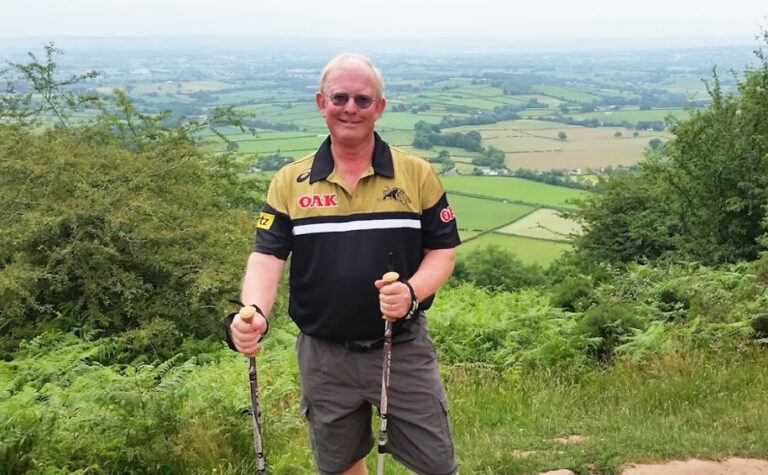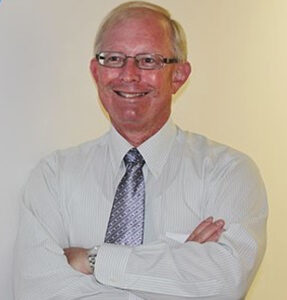
Elizabeth Moran sits down to talk with Warren Bird about his long and varied career starting as an economist working for Treasury in Canberra, to his momentous role alongside Chris Cuffe at First State, which became Colonial First State, to his most recent role as Executive Director at Uniting Financial Services amongst others. Warren talks about how to use fixed income in a portfolio, his own SMSF strategy, and how he invests his fixed income allocation. Warren also shares his thoughts on inflation, interest rates and finishes with some advice for those wanting a finance career.
You’ve had a long, illustrious career in fixed income Warren, can you tell us a bit about your journey?
Thanks Liz, it’s been a fulfilling career and hopefully not completely over yet!
I studied economics at university. At high school I had a preference for economics and mathematics, but I might have done science or medicine if not for the encouragement of a couple of mentors, including an uncle who was a business accountant and a public servant neighbour I respected greatly. Between them, they directed me to economics. Back then, in the late ’70s, most of the jobs were with the public service. One of my uni colleagues ended up going to the Reserve Bank in Sydney (and eventually becoming its Governor) and another joined the secretariat of the Campbell Inquiry into the financial system, but I liked the idea of a Treasury career where I might be able to influence public policy. That took me to Canberra.
My time in Treasury overlapped with some exciting times, particularly after Paul Keating became Treasurer. While I was in junior roles, I was at the Loan Council meeting in 1984 that introduced the global approach to state government borrowings which eventually led to the formation of the state treasury corporations. I was in Overseas Economic Relations when they floated the Australian dollar, so was close to that action, and also did some of the early work on implementing the recommendations of the Campbell inquiry.
Of course, one of the key things that Keating did was to deregulate the financial markets. This created a lot of opportunities in the private sector, including back in Sydney. By then my wife and I had a daughter and we decided to move closer to grandparents, so I ended up moving into private sector banking economics.
I started out at Lloyds Bank, one of the recently licensed foreign banks, initially working as the offsider to one of the leading private economists, Will Buttrose, but eventually their chief economist in Australia. However, in 1988 I moved to Merrill Lynch, which is really where I hit my straps. I was five years as the Australian fixed income economist at Merrill Lynch and that got me the opportunity to tour the world and give presentations about Australia to audiences all over the place. That was very formative, but also very exciting.
It laid the platform for my eventual move into funds management. One of my clients at Merrills was Stuart Piper who worked for SBC Dominguez Barry. Stuart was one of the leading lights of fixed income back in the ’80s and ‘90s. He was the guy that first introduced all the bond indices that we now use – the old DBSM (Dominguez Barry Samuel Montagu) bond indices. They’re now the ones that are on Bloomberg, the AusBond indices.
Also read: Three Different Types of Bonds And How They Work In Different Economic Climates
I would ring Stuart regularly and chat about the markets and so eventually when he wanted to introduce a diversified fixed income capacity to their business he asked me if I wanted to come over and be part of that team. So, that’s how I got into fixed income funds management.
I was there for a few years and then in 1996 I saw an ad for a head of fixed income at a little place called First State Fund Managers. They didn’t have very much in fixed income at the time. They had about $1 billion in cash and $28 million (sic) in a bond fund.
It was very tiny and I recall one of the asset consultants questioning my sanity but it was an opportunity to do things my way and to be the head of the team. I was interviewed by Chris Cuffe who was the CEO and we hit it off really well. As a result of move, I was blessed to be part of one of the most exciting corporate rides in Australian history. Going from being a little boutique offshoot of the State Bank of New South Wales to becoming Colonial First State was just an incredible 16 years that I had there. I think that’s where I really made my name and whatever reputation I have was through that time at Colonial.
Warren, what was the funds under management when you left that role? You must have seen it go from $28 million to billions?
Yeah. At its peak, in around about 2005 or 6, it was about $60 billion in cash and fixed income. We were the biggest in Australia in that asset class. I mean, AMP might dispute that. I saw different numbers at different times, but we were right up there and it was just amazing.
Part of Chris Cuffe’s strategy at the time was to build capacity across asset classes, so he hired property people, global share management people and a fixed income person in me, bringing us together to give the business well-credentialed balanced super funds. That’s where I got a lot of the initial growth in fixed income experience.
In addition to this organic growth, Colonial under Peter Smedley’s leadership went on a buying spree in 1998 that saw First State take over from the old Colonial Investment Management in Melbourne (this was when the Colonial First State brand came into being) and bought Legal & General and Prudential in Australia.
This coincided with the early development of a corporate bond market in Australia, and we were part of that as we expanded our product range to include diversified fixed income funds. When I started it was mostly about duration management of government bonds. But by the time I finished, the portfolio was highly diversified.
Then, in the year 2000, the Commonwealth Bank bought Colonial out, and eventually we merged with the Commonwealth Bank’s investments team in 2003.
Looking back, we considered 2003 to about 2006 as the golden years. We were very successful at that time picking up some $1 billion dollar mandates with a few big institutions in Australia, also with a Japanese retail issuer, because the Japanese loved Australian bonds at the time. It was all good fun. Then the GFC hit and things slowed down for a while before we started winning mandates again until I left in 2013.
When I look back, I think one of the things I’m proudest of at Colonial was that our diversified fixed income fund included high yield bonds.
We had some overseas managers who managed mandates for us, hedged back into Australia, in high yield.
I learned a lot about that asset class and you may have seen one of my Firstlinks articles in which I championed the cause of having a modest allocation to high yield in your portfolio. Because I think it’s a terrific asset class, if it’s properly managed.
Yes, absolutely. I couldn’t agree more.
After 16 years I felt time was up and had two years sabbatical. I did a little consulting and that’s when I started writing for Insto Magazine and Firstlinks.
The main consulting role was with Assured Guaranty, a credit wrapper. They were trying to rebuild their presence in the Australian market after the GFC had eroded their market and they asked me to help them work out how to approach the institutional investment community. Although very much involved in the fixed income market, this role actually ‘’extended my coast’’ because it was more about advising the company on its strategy than putting together transactions. I felt that the company was underselling itself by focusing on promoting their AA rating as the main attraction. I said to them, “Look, that’s not really going to distinguish you from all the other AA credits out there. Plus you’re offering a more complicated structure, because you’ve got an underlying issuer and then you’ve got the credit wrap to get the rating to AA”.
My view, with which they agreed, was that they should instead be talking much more about all the things that they do that give them the ability to wrap it up to a AA credit.
That includes a lot of skills like project management. Assured’s focus was on longer term public finance type deals and credit enhancing things that might have been crossover BBB, BB type credits to something that a lot more people could soundly invest in. I said most fund managers think that they can evaluate a credit. And a lot of them have got some very good credit people and good skills.

The role really helped me develop my business management skills so that then when the role at UFS as the executive director (CEO) came up, I applied and got the job. I had six really good years helping that business to reposition itself away from just being the in-house bank of the Uniting Church, to having a more diverse service offering and capability.
That’s the snapshot of my career. From economics in the public service through economics in the private sector, the banking sector, to fixed income funds management, to financial business management.
It’s really diverse, Warren. I don’t know of too many people with that sort of length of career in markets and at such a senior level. What are some of your fixed income takeaways? How would you suggest new fixed income investors go about structuring a fixed income component in their portfolio?
My key takeaway is that fixed income isn’t for everyone, but if you use it properly it will reward you by helping you achieve your investment outcomes. What that means really depends on your objectives.
I think the thing I’ve learned about fixed income, and in fact I think it applies to all assets, is that you manage investments best when you understand in effect what your liability profile is.
Now, in an institution that’s really a lot more obvious than what I mean than for an individual. We managed a lot of money when I was at Colonial for general insurance companies. They know that over, say, the next five years they’re going to be paying out certain amounts to claimants on a fairly regular basis. We were able to work with them to estimate the duration and yield curve structure of their liability profile and then use fixed income to generate a cash flow that would enable them to earn a return while meeting their vital need to have money available to pay out. They need liquidity at the right time and capital security.
But it’s also relevant to individuals. You really do need to understand your liability profile and this is where financial planners quite often really hammer the argument that people who are in superannuation have a long term objective. So, why would you be in bonds? You just should be in equities because it’s all long term.
I actually pretty much agree with that. I think some fixed income practitioners oversell the asset class. They oversell the short term diversification benefits – namely, that if there’s a real crisis like the GFC, your bonds will do really well when your stocks are collapsing. At that time, yeah, that works. But bonds underperform stocks most of the rest of the time and the option cost of being in bonds permanently just to provide some protection for those extreme situations is something that I think is a little bit excessive.
I think it’s really all about understanding your liability profile and fixed income for me fits most naturally with a lot of institutions that need regular cash flow over three, five and seven year periods. They would really be hammered by the volatility of equities and they need some capital security.
Fixed income really suits them. Superannuation funds, as well, especially the bigger ones, need some liquidity because of member choice. Corporate and government bonds have a place to play in that part of their portfolio. They don’t all want it in cash.
Normally there is a positively sloped yield curve so you get paid to take a little bit of term risk and super funds can do that. But your typical investor, retail investor, the yield on government bonds is just too low right now. I mean, I think of the portfolio we managed at UFS, as I said, I diversified the business, but the biggest chunk of it was and still is the in-house bank of the Uniting Church. UFS pays effectively interest rates to the church’s investors that are competitive with the banks. Either on at-call or on fixed term investments which compete with term deposits for the banks.
Also read: One-On-One With Camilla Love, Managing Director of eInvest
If UFS then invested its asset portfolio in government bonds it would lose money. Because government bonds yield less than term deposits pay to investors, and UFS needs to make a profit.
UFS tends to use a lot more corporate bonds and floating rate notes. Understanding your liability profile and what you need to achieve out of your portfolio helps you work out the type of fixed income and the role of fixed income that you need to have. I think it’s great for personal investors saving for a holiday, or for a major asset purchase where they don’t want to risk losing the money when they need it.
Maybe you could talk about how you manage your personal money to give us an idea of what you think of fixed interest for personal investors?
Sure. (This isn’t giving advice to anyone as everyone has different circumstances and should talk to an advisor – it’s just for general information.)
I personally run my super to about a 70/30 growth/defensive mix.
This mix gives me a level of volatility that I’m comfortable with, plus sustaining a healthy income rate that at the moment I reinvest – I’m not in pension phase yet!
The 30% is all corporate bonds – including some high yield. A lot of purists would say, “Oh, but they’re correlated to the equities.’’ I don’t care. I’m in it for the longer term. I’m not in bonds to give me some sort of protection in a GFC, I’m in them for a higher total return over time than government bonds can give me. Corporate bonds pay a much better income and I’m really happy to have them in my portfolio. I think other, more secured fixed income belongs in the saving for a rainy day pot of money outside of super, saving for a holiday or whatever. This is where for retail investors, their liability profile is actually all about what are you actually saving for?
Some people are saving for a deposit on a house. Really, despite all the stories we’re hearing recently about people who’ve made enough money out of Bitcoin or Afterpay to be able to have a deposit for a house, I really don’t recommend that sort of strategy.
If people are saving for a deposit for a house, that’s going to be perhaps a three year project or longer. You need some capital security. So, term deposits and fixed income, corporate bonds, corporate bond funds can play a good role in that because that’s the sort of time frame that their risk profile suits.
Corporate bonds do have to be very well managed. I’m known for my mantra about diversification, which is crucial in holding corporate bonds.
This is because corporate bonds have no upside, but the same downside as equities. If something goes broke with an individual company, if you’re an equity manager you lose everything. If you’re a corporate bond manager, you’ll probably lose at least half of everything. So, you need diversification to make sure that the ones that don’t work out don’t wipe you out. What’s the point of earning an extra, say, 1% a year in yield from corporate bonds compared to government bonds, but having 1 or 2 assets go wrong every 10 years that lose you more than 10% of your capital!
This happens because bonds don’t have the upside. You can have a portfolio of 30-40 stocks, and you’ll have 10 that treble or quadruple over a few years that’ll more than offset the one or two that go backwards. Whereas in a bond portfolio, all you get is your interest and your money back. Over time, you just don’t have that same upside.
Unless you’re trading, of course. Because it’s a traded market. But no, I take your point. Would you like to expand on how you hold your 30% in corporate bonds?
Yeah, I’m happy to do that. I’m in two different corporate bond portfolios, one that has an Australian focus but does invest globally, as well. This is run by AMP, with one of my former team members, Sonia Baillie, the key credit risk person. And the other one is a global credit portfolio run by PIMCO – they were a great competitor in my Colonial days and one of the world’s best fixed income managers. And because of the limited range of funds available in Australia, it won’t surprise you that Richard Quinn at Bentham‘s has got my high yield allocation.
No. Well, they’ve got a range of high yield funds, haven’t they?
Yes. I use two of their funds in my SMSF. I’m really happy with them.
There may be others, but my SMSF is invested through a particular platform. I’m a little bit tied into whatever they put on the platform. Some other people manage an SMSF in a way where they would go more directly into the fund managers and manage it themselves, so there might be a few other options. But that’s where my 30% of fixed income is allocated, is into a domestically focused corporate bond fund with global diversification, a global credit fund, and a global high yield option.
I think fixed income is a great asset class if you use it right.
Young people in super just don’t need fixed income. They’ve got a long time and equities and property are the way to go for them. So, use it properly and it’ll reward you. It’ll give you what you need.
That’s the short quote from my takeaway, I eventually got there.
Okay. That sounds good. You’ve had a long, successful career, what advice would you give to people wanting to get into finance?
The industry just keeps changing, so you need to be adaptable. For instance, superannuation used to be seen as an industry that was just going to keep growing, people had to invest, and the opportunities for people to show their worth would grow with it. However, these days there’s a lot more fee pressure and regulatory pressure, funds are amalgamating, and although the amount in super keeps growing, the job opportunities aren’t emerging at the same pace as they used to.
And so just be aware of that. My advice to people, especially young people starting out, is always be fairly flexible, building into your career and skill-set a capacity to change direction if you have to. I learned that when I was young, in the Treasury department in Canberra, where they used to prefer it if you had worked as a junior in several different areas – a micro policy area, and a macro policy area, and fiscal policy, and other parts of Treasury – so that you had that broad experience and could see the big picture.
Pretty much for the first several years of my career, every step I took, I was always conscious that I wanted to keep as many doors open as possible that I could move through next. Eventually you have to start specialising, but you need to have that willingness to learn and to be flexible, I think. Look at me – from a public service economist to the CEO of a small financial services business is probably not the career path I expected 40 years ago, but you need to keep growing yourself so you can go through new doors.
In terms of fixed income, I also recommend reading very widely, but also questioning everything that comes across your path as “research.” For example, be very aware of short term correlations being presented as surefire trading strategies.
I’ve seen so many of them over the years, it’s not funny.
That’s I guess was the genesis of my most recent article on Firstlinks between correlation between bonds and equities.
Forge your own particular identity as a fixed income manager. I think there’s no one way to work out how to add value in a bond portfolio. I mean, I had a lot of success the way we did things over the years but there’s other ways to do it.
Be true to yourself. I think one of the big things that I did and one of the reasons I took the job at First State which became Colonial, was I’d reached the point where I didn’t think that managing duration by forecasting the interest rate cycle was something that I could do very well, and that I felt comfortable doing. And that’s why I developed a broader, more long term value-oriented way of thinking about bonds.
That’s what gelled with Chris Cuffe. He really liked that and it’s why I got the job that contributed to so much of our success.
I think there’s quite a lot of good managers out there who have really strong, solid forecasting processes. I think PIMCO is an amazing organization on the fixed income side. They do things differently to the way we used to at Colonial. PIMCO and Colonial often came up against each other in business pitches. They usually won, we usually came second, although we did win a few. Yeah, got to have a lot of respect for companies like PIMCO.
Excellent. A couple of other things, Warren. I’m keen just to get your very quick thoughts on the current market and what you think might be the path of interest rates and inflation.
I have been paying attention to the inflation discussion, and I mean, I’ve got a West Australian Government Employees Superannuation Board (GESB) investment committee meeting next week and it was at the December 2020 GESB meeting last year where I said I think we need to be ready for a pick up in inflation, especially in the US.
That’s what’s come about, and it’s made me in a sense go full circle all the way back to my uni days where we learned about the truism that MV equals PT. I don’t know if you studied economics to know what I’m talking about there, but money times velocity of money equals the value of transactions, the real value and the price of transactions.
And a lot of people have since the GFC, wrongly thought that QE was printing money. But it isn’t. Because all QE does is change the asset base of the financial institutions and if all they do is reinvest it back at The Fed which is what happened most of the time after the GFC, there’s no increase in the money supply, so you’re not going to get that pickup in either real activity or inflation. But in the last several years, the banks have started lending again. Mainly the US, and lending to business and lending to growth.
The US money supply picked up in 2019 and 20 by well above 20%. And so that to me was a real red flag that the inflation side of things was going to start picking up. I think there’s a lot of spare capacity in the world economy that can get taken up first before it turns into inflation, but if money supply keeps growing at those sort of rates, then inflation will follow and that’s what we’re seeing. I don’t think it’s just a temporary thing, the way The Fed and a few others have been suggesting.
I think inflation will be a bit higher and eventually that will see interest rates around the world starting to increase again and head back to 2-5%. I’m not sure when the central banks will cave in on that. I think in Australia, it certainly depends upon us coming out of the COVID restrictions with the vaccination rates up.
Something to keep an eye on for next year. If that happens, then I imagine bond yields will rise. So, there’ll be some short term negative returns to come out of the bond market, but I’ve written often enough about not being afraid of that, and seeing that as a good thing. Because eventually it’ll mean that fixed income starts paying income again, which it hasn’t been doing for a while.
What do you like to do outside of work?
Outside of work, one of the things people who know me well already know is that I’m a Christian. That’s one of the reasons I worked for the Uniting Church for the last six years. It was a great opportunity to bring my faith and my professional capacity together. And so that takes up a bit of my time and energy. Reading theology and listening to podcasts about life and faith.
There are some really nice theology podcasts out there, which I listen to when I’m walking the dogs.
My wife and I love hiking. We try to structure our overseas trips (remember them!) around at least one or two decent hikes. In 2017, we hiked up Llandewi Skirrid in the Brecon Beacons in Wales.
I’m looking forward to getting back into golf. I haven’t played golf for four and a half years now. I’m not a good golfer, don’t get me wrong, but I really enjoy playing. I haven’t played golf since I had a shoulder injury. I’m looking forward to getting back into it.
Family is important, and one of the real blessings of not being at work now and being in lockdown is just spending a lot more time with my wife. We had our 40th wedding anniversary earlier this year.
Congratulations
Thank you. We got married on the 3rd of January, so we tend to have our big anniversaries combined with our New Year’s Eve party. We’ve had one every year at our place since about 1988. We have a different theme every year, so people dress up according to the theme, and we have activities at the party.
That’s a bit of fun and I think we’ve already decided that our theme for the party for this year if we can have one is going to be a COVID hair party.
Yeah, no one’s been able to have a haircut. That’s a good one.
That’s exactly right. We’ll see what people can do with that. We have some very creative friends who will do some very interesting things with that sort of theme.
































